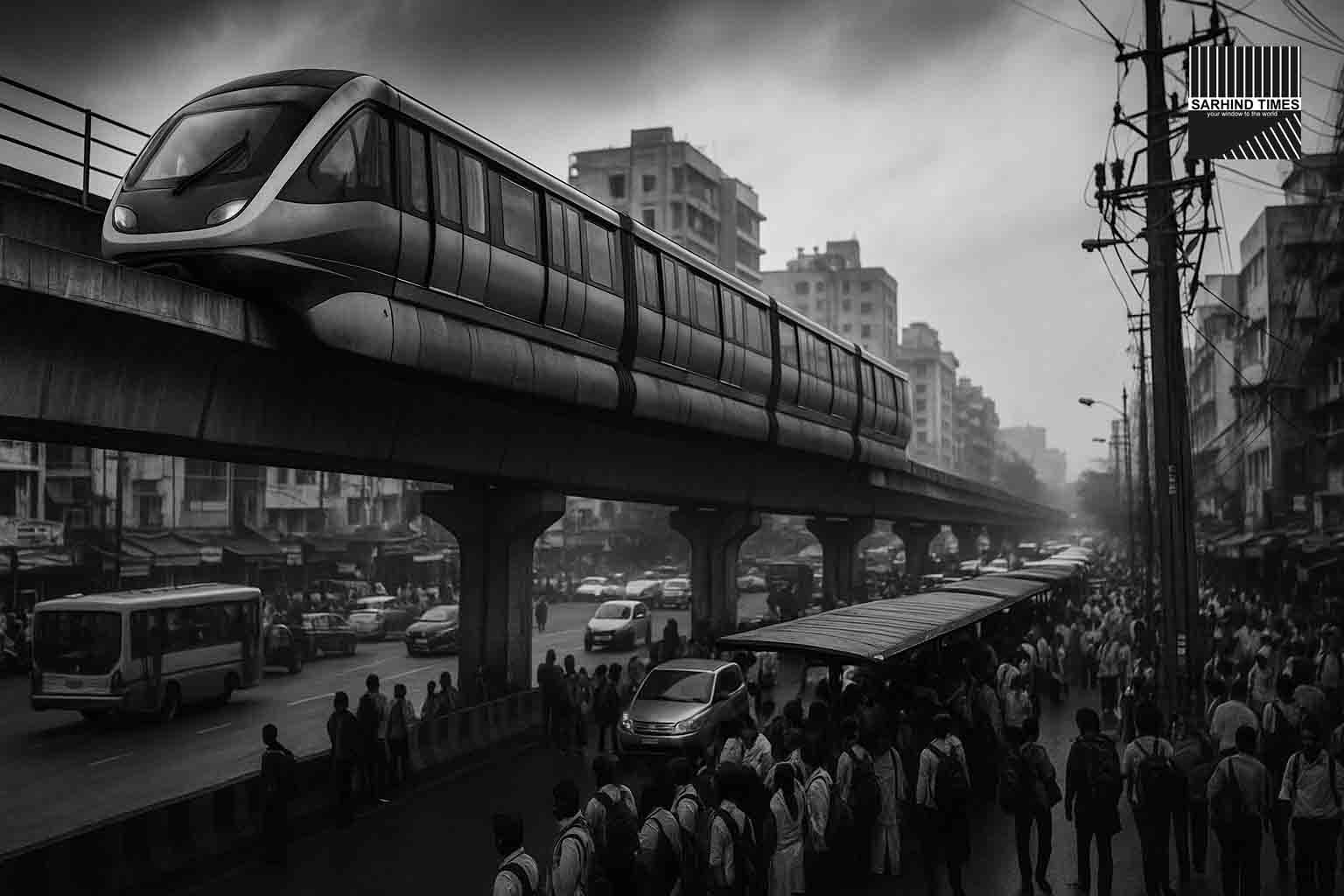20 sep 2025
Mumbai—the city that never sleeps—has always been a crucible for transportation experiments. From Asia’s busiest suburban rail network to the expanding metro corridors and the ambitious coastal road project, the city’s mobility landscape is constantly evolving. Among these, the Mumbai Monorail project holds a special place. Launched with high expectations in 2014, it was envisioned as a futuristic supplement to the city’s overburdened transit systems.
Now, more than a decade later, the Mumbai Metropolitan Region Development Authority (MMRDA) has announced the temporary suspension of services between Chembur and Saat Rasta for two months. The suspension—intended for maintenance and upgrades—has reignited debates around the monorail’s role, relevance, and challenges. While it promises smoother service post-upgrade, the closure has also disrupted the daily routines of thousands of commuters.
This article explores the reasons behind the suspension, its impact on citizens, the larger questions about urban transport planning, and what the future holds for Mumbai’s monorail.
The Suspension Announcement
MMRDA officials stated that the two-month closure is necessary for critical upgrades. Teams will focus on:
- Track Rectification – Addressing alignment issues that often cause delays.
- Rolling-Stock Inspections – Ensuring coaches and motors meet safety benchmarks.
- Signal & Communication Calibrations – Modernizing systems for better reliability.
The move, though sudden, was not unexpected. Over the years, the Mumbai Monorail has faced frequent service interruptions, mechanical failures, and even safety concerns. Officials emphasize that the maintenance window will align with international best practices to bring the system closer to global reliability standards.
Impact on Daily Commuters
The Chembur–Saat Rasta corridor has been a lifeline for office-goers, students, and healthcare workers in central and eastern Mumbai. With services halted:
- Alternate Routes: Commuters are forced onto already congested suburban trains and BEST buses.
- Increased Travel Time: Daily journeys have stretched by 20–45 minutes for many.
- Hospital Access: Some hospitals near the corridor reported late arrivals of patients and staff.
- Student Mobility: College and school students expressed concerns about delays during exam season.
Social media was flooded with reactions ranging from frustration to cautious optimism:
“I used the monorail to avoid the endless traffic on Sion road. Now I’m back in the chaos.” – Office commuter.
“If this maintenance ensures fewer breakdowns, we’re willing to wait.” – College student.
Lessons from Monorail’s Rocky Journey
When it was launched, the Mumbai Monorail was marketed as India’s first and only operational system of its kind—a sleek, modern mode of urban transit. But reality has been mixed:
- Low Ridership: Initially projected at over 2 lakh passengers daily, ridership has hovered around 30,000–40,000.
- Technical Glitches: Frequent breakdowns eroded public confidence.
- Integration Issues: Poor connectivity with metro and suburban networks limited its utility.
- High Costs: The project cost ballooned beyond expectations, leading critics to question its return on investment.
Yet, despite the setbacks, the monorail has retained relevance as a “last-mile bridge” for specific neighborhoods.
Urban Mobility Experts Weigh In
Urban transport scholars believe the suspension reflects a larger truth: the challenges of first-generation transit technologies in India.
- Dr. Sanjay Vora, Urban Planner: “The Mumbai Monorail was ahead of its time, but integration with existing modes was never prioritized. Without seamless transfers, any system struggles.”
- Prof. Meera Iyer, Transport Policy Analyst: “This closure could be a turning point if MMRDA uses it to re-engineer not just tracks but the entire service philosophy—timely updates, reliable schedules, and proper multimodal links.”
Broader Implications for Mumbai
The closure also opens up broader discussions about Mumbai’s transport ecosystem:
- Metro Expansion: With multiple metro corridors now operational, will the monorail remain competitive?
- Urban Equity: Does investment in monorails and metros prioritize middle-class convenience over improving buses, which serve millions daily?
- Public Trust: Can reliability be restored in a system where passengers once lost confidence?
The answers will shape how citizens perceive not just the monorail but Mumbai’s broader mobility planning.
Environmental & Sustainability Lens
Critics argue that underutilized systems like the monorail risk wasting public funds and adding to the carbon footprint of construction. However, if refurbished effectively, the monorail can:
- Reduce road traffic emissions by shifting commuters from cars to transit.
- Serve as a “cleaner” alternative for short corridors.
- Complement metro and suburban systems by filling geographical gaps.
International Comparisons
Globally, monorails have seen varied success:
- Tokyo & Osaka: Integrated monorails thrive due to punctuality and connectivity.
- Sydney: A monorail was dismantled after years of low ridership and high costs.
- Kuala Lumpur: Faced initial struggles but turned around after modernization and integration with other modes.
Mumbai stands at a crossroads: will it follow the Sydney model of abandonment or the Kuala Lumpur path of revival?
The Road Ahead
MMRDA has promised post-maintenance trial runs, safety checks, and staggered resumptions. Planners also hinted at digital tools like real-time updates, QR-code ticketing, and improved feeder buses.
If these are executed transparently, the Mumbai Monorail could reclaim some credibility. But the city’s ultimate mobility success depends on integration—not isolated projects. A holistic, multimodal, and sustainable approach is the need of the hour.
Conclusion
The two-month suspension of Mumbai’s monorail services is more than a pause in daily commuting—it is a mirror to the city’s larger transport dilemmas. While commuters face immediate inconvenience, the long-term payoff could be smoother, safer, and more reliable services.
The challenge lies in converting this maintenance break into a renewal of trust. For Mumbai, a city perpetually in motion, the monorail’s journey from skepticism to credibility may well begin with these next two months.
#Mumbai #Monorail #PublicTransport #UrbanMobility #CityLife #Infrastructure #SarhindTimes #MMRDA






















+ There are no comments
Add yours